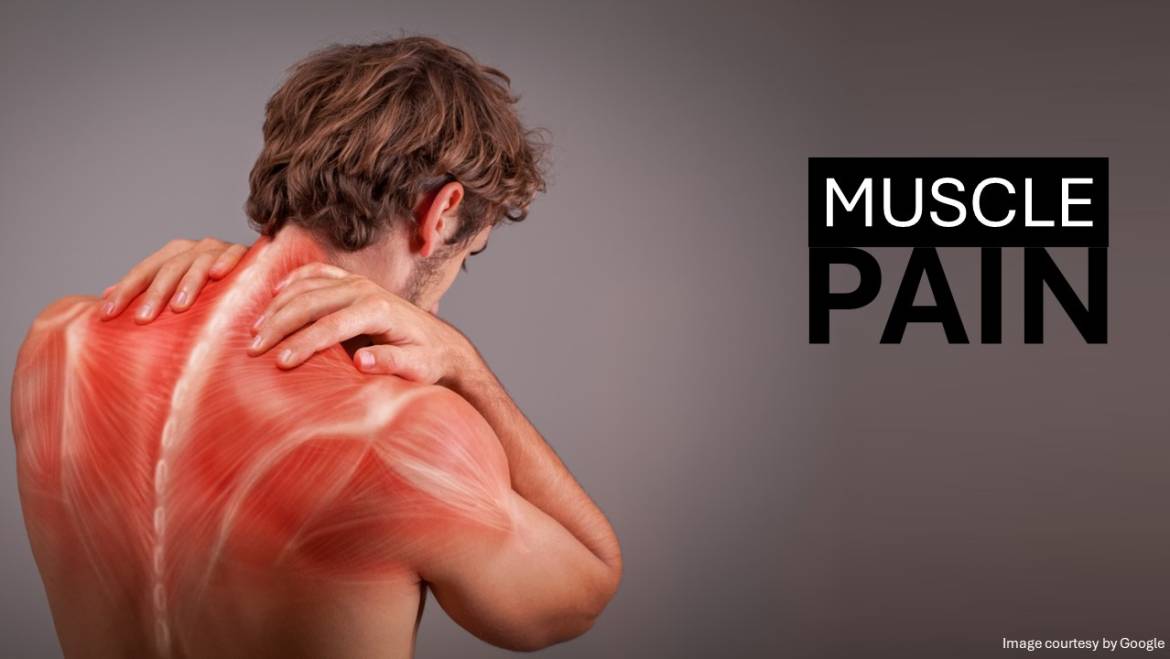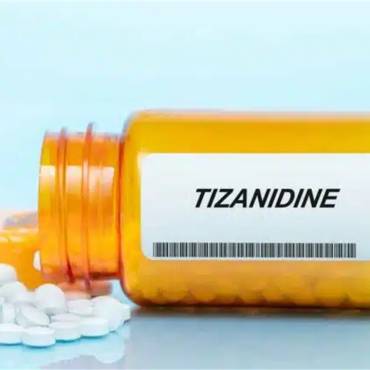Muscle pain, also called myalgia, is most associated with strains and sprains. It frequently appears as redness at the injury site, fever, swelling, and tenderness. Muscle pain may result from excitation of the muscle nociceptor because of excessive muscle use, trauma, or viral infections.
Muscle pain is a major medical issue; about 60 to 85% of the population has had back pain of muscular origin at some time or other. A pain relief medication can help in such cases. Your healthcare provider can recommend the best medicine for back pain. The article overviews the common types of muscle pain, causes, and some commonly used lower back pain medications.
About muscle pain
Muscle pain could indicate injury, disease, infection, or health problems. You may feel a steady, deep ache or a sudden sharp pain. Some people develop muscle pain all over, while others get it in specific areas. Everyone experiences muscle pain differently.
People of all ages can develop sore muscles. When you try an all-new physical activity or switch up your regular exercise routine, you may experience delayed-onset muscle soreness. Muscle pains may come six to twelve hours after an exercise session and last up to 48 hours. You tend to experience pain as the muscles heal and get stronger. In addition to muscle pain, an individual may have muscle cramps, spasms, and joint pain. Get the best pain reliever to reduce tenderness and joint stiffness.
Possible causes
Many things can contribute to muscle pain, including infections, injuries, autoimmune diseases, medications, and neuromuscular disorders. Autoimmune disorders develop when an individual’s immune system mistakenly attacks itself. An individual with a healthy immune system fights off germs and infections. Autoimmune diseases that contribute to muscle pain include lupus, multiple sclerosis, and inflammatory myopathies such as inclusion body myositis and polymyositis.
Infections that bring muscle pain
Viral and bacterial infections can contribute to muscle pain all over. Depending on the cause, you may also have nausea, fever, and swollen lymph nodes. Infections that bring muscle aches include malaria, cold and flu, malaria, trichinosis (a foodborne illness), Lyme disease, and Rocky Mountain spotted fever (infections through tick bites).
Injuries that contribute to muscle pain
You may develop sore muscles from overuse when you use the same muscles at work or during a workout session. Other injuries that cause sore muscles include:
- Back strains and sprains
- Abdominal strains
- Tendinitis
- Tendinosis
- Broken bones and traumatic injuries
- Myofascial pain syndrome from overuse of muscles
Medications that cause muscle pain
Certain drugs and therapies can contribute to temporary or chronic pain. Some medicines can cause inflammation around muscle cells (myositis) or activate muscle pain receptors. These therapies include:
Antihypertensive agents (medications for high blood pressure), such as:
- Angiotensin-converting enzyme (ACE inhibitors).
- Cancer treatments, including radiation therapy and chemotherapy
- Statins to lower cholesterol levels
Neuromuscular disorders that cause muscle pain
Neuromuscular diseases can cause muscle weakness and pain. These conditions include Amyotrophic lateral sclerosis, myasthenia gravis, muscular dystrophy, and spinal muscular atrophy.
Other conditions that can cause muscle pain include cancers, chronic fatigue syndrome, fibromyalgia, underactive thyroid, stress and tension, peripheral artery disease, imbalance of electrolytes, and compartment syndrome.
Care, treatment, and prevention!
Immediate treatment for a strained muscle is to stop the activity that caused it. Ice packs applied to the area can provide relief. You should initially ice your injured muscle for at least twenty minutes to thrice daily. As your muscle heals, you can begin applying ice a little less. It is recommended to use muscle pain medicine like aspirin, tylenol, or anti-inflammatory medications (ibuprofen, viox, naprosyn, aleve, etc.) to relieve pain and swelling. You should use these pain relief medicines carefully if you have a history of kidney and stomach problems.
It is always a good decision to rest after the initial injury. However, make sure you do not rest for too long. One should start moving the joints and muscles as soon as possible to prevent weakness, atrophy, and stiffness. Once you can stretch and move without pain, you can start your day with light stretching and slow muscle movement.
When you feel fit, you can gradually resume activities in moderation, but make sure you begin slowly.
Sometimes, seeking medical help when recovering from a muscle strain and using the best pain reliever for muscle pain advised by your health care professional, especially more severe ones, is extremely helpful. You will better know when you can move and return to your full activity when you feel your strength equals the same muscles on the other side of the body and when you can resume activities with little or no pain. It is a good idea to warm up the muscles before you begin any stretching or exercise, both during and after you have recovered from the injury.
Optimal pain management involves a combination of nonopioids, adjuvants, opioid analgesics, as well as non-pharmacological strategies. Nonopioid analgesics include paracetamol and non-steroidal anti-inflammatory drugs (NSAIDs) like ibuprofen, which are used as the best medicine for back pain in case of mild to moderate pain. Furthermore, chronic pain management requires the use of opioid analgesics.
Other preventive measures:
- Rest and get rid of the pain.
- Soak in a warm bath with Epsom salts or take a warm shower.
- Try complementary strategies such as massage, meditation, or acupuncture.
Recovery usually depends on a range of factors, such as the muscle involved and the severity of the injury. In general, milder strains will recover wicker than severe ones. Typically, it takes about two weeks to return to normal activity after a mild strain and takes up to two months or longer to recover after a severe strain.
The bottom line!
Almost everyone has muscle pain or strains now. For temporary pain relief, rets stretching, icing, and pain medications can help. Chronic or severe muscle pain makes it tough to perform even daily tasks. If you develop a condition that causes chronic pain, speak to your healthcare provider about the best pain reliever for back pain and therapies that help.
admin
Latest posts by admin (see all)
- Sildenafil Jelly – A Faster-Acting Alternative to Traditional ED Tablet - August 22, 2025
- Not Just Thirsty: Surprising Signs Your Body Is Dehydrated - August 8, 2025
- Bone Health Beyond Calcium: Underrated Nutrients You’re Probably Missing - August 8, 2025




